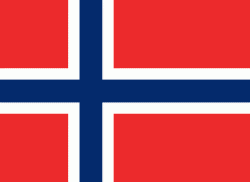Norwegian krone
kr
The krone (, abbreviation: kr (also NKr for distinction); code: NOK), plural kroner, is currency of the Kingdom of Norway (including Svalbard). Traditionally known as the Norwegian crown in English. It is nominally subdivided into 100 øre, although the last coins denominated in øre were withdrawn in 2012.The krone was the thirteenth-most-traded currency in the world by value in April 2010, down three positions from 2007.
The Norwegian krone is also informally accepted in many shops in Sweden and Finland that are close to the Norwegian border, and also in some shops in the Danish ferry ports of Hirtshals and Frederikshavn. Norwegians spent 14.1 billion NOK on border shopping in 2015 compared to 10.5 billion NOK spent in 2010. Border shopping is a fairly common practice amongst Norwegians, though it is seldom done on impulse. Money is spent mainly on food articles, alcohol, and tobacco, in that order, usually in bulk or large quantities. This is due to considerably higher taxes and fees on tobacco and alcohol purchased domestically in Norway.
The krone was introduced in 1875, replacing the Norwegian speciedaler/spesidaler at a rate of 4 kroner = 1 speciedaler. In doing so, Norway joined the Scandinavian Monetary Union, which had been established in 1873. The Scandinavian currencies were mutually exchangeable at par until 1914 with the suspension of the gold standard due to World War I. After this date, the currencies of Denmark, Norway, and Sweden ceased to be mutually equivalent to each other.
Within the Scandinavian Monetary Union, the krone was on a gold standard of 2,480 kroner = 1 kilogram of pure gold (1 krone = 403.226 milligrams of gold). The gold standard was suspended from 1914 to 1916 and from 1920 to 1928, and in 1931 it was permanently suspended. In 1933 the krone was pegged to the pound sterling at 1 pound = 19.9 kroner, and in 1939 the krone was pegged to the U.S. dollar at $1 = 4.4 kroner.
During the German occupation (1940–1945) in the Second World War, the krone was initially pegged to the Reichsmark at a rate of 1 krone = 0.6 Reichsmark, later reduced to 0.57. After the war, a peg of 1 pound = 20 kroner was established in 1946, equivalent to US$1 = 4.963 kroner before the 1949 devaluation of sterling revised it to US$1 = 7.142 kroner.
In December 1992, the Central Bank of Norway abandoned the fixed exchange rate system in favor of floating exchange rates (managed float) due to the heavy speculation against the Norwegian currency in the early 1990s, which lost the central bank around two billion kroner in defensive purchases of the NOK through the usage of foreign currency reserves for a relatively short period of time.
Country
-
Norway
Norway, officially the Kingdom of Norway, is a Nordic country in Northern Europe, the mainland territory of which comprises the western and northernmost portion of the Scandinavian Peninsula. The remote Arctic island of Jan Mayen and the archipelago of Svalbard also form part of Norway. Bouvet Island, located in the Subantarctic, is a dependency of Norway; it also lays claims to the Antarctic territories of Peter I Island and Queen Maud Land. The capital and largest city in Norway is Oslo.
Norway has a total area of 385,207 km2 and had a population of 5,425,270 in January 2022. The country shares a long eastern border with Sweden at a length of 1,619 km. It is bordered by Finland and Russia to the northeast and the Skagerrak strait to the south, on the other side of which are Denmark and the United Kingdom. Norway has an extensive coastline, facing the North Atlantic Ocean and the Barents Sea. The maritime influence dominates Norway's climate, with mild lowland temperatures on the sea coasts; the interior, while colder, is also significantly milder than areas elsewhere in the world on such northerly latitudes. Even during polar night in the north, temperatures above freezing are commonplace on the coastline. The maritime influence brings high rainfall and snowfall to some areas of the country.

